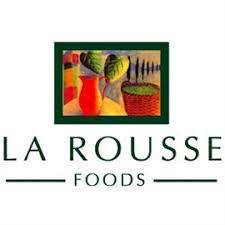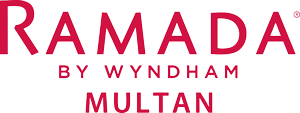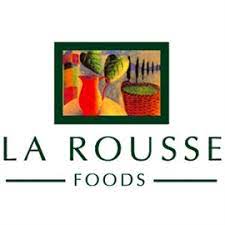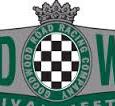Title Page
-
Audited by
-
Staff present
-
Location
-
Conducted on
1) Personal Hygiene of Food Handlers
-
Food handlers are fit for work and show no symptoms of illness.
-
No visible injuries is observed on food handlers. If any, open wounds should be covered by brightly-coloured (preferably blue) waterproof plasters. (IMMEDIATE FAILURE)
-
Food handlers are in proper dress code, according to designation.
-
Food handlers' fingernails are short and clean with no nail polish or accessories. Hair is neat and tidy, covered with cap.
-
No visible accessories and jewelry e.g. watches, bracelets, earrings.
-
Ready-to-eat food handled by clean utensils or disposable gloves. (IMMEDIATE FAILURE)
-
Change of gloves observed after handling cash.
-
Regular handwashing in between tasks, with soap. Dry hands with clean paper towels and designated hand towels. (to prevent wet floors, safety issues e.g. slips and falls)
-
Personal belongings are stored at designated areas, out of sight i.e. to prevent cross contamination.
-
No outside food and drinks observed. (IMMEDIATE FAILURE)
-
Availability of valid basic first-aid kit.
2) Food Preparation, Handling and Hygiene Practices
-
Food preparation areas are clean and in good condition.
-
Kitchenware and utensils are clean and in good condition i.e. no visible rust, chip or crack.
-
Proper workflow and segregation to prevent cross-contamination of food preparation areas i.e. raw food and ready-to-eat food preparation areas are separated and washed between tasks (IMMEDIATE FAILURE)
-
Colour-coded cloth and chopping boards, to prevent cross-contamination.
-
Food in containers are covered or wrapped in cling-wrap when not in use.
-
Frozen food is thawed using one of the following methods: 1) in lowest rack of chiller, 2) in microwave oven, 3) wrapped under running water, or 4) wrapped and submerged in container of clean water.
3) Food Storage
-
Food items are visually inspected upon receipt and stored.
-
Food items are stored at correct temperatures in accordance to product specifications.
-
Ready-to-eat food is stored above or separately from raw/semi-cooked food in chillers and freezers. (IMMEDIATE FAILURE)
-
Food items that are removed from original packaging should be stored, wrapped in food-grade containers and labelled with expiration/preparation dates.
-
Prepped pizzas in pizza cases to be discarded after 4 hours.
-
Contents in bain marie are in good condition, e.g. sauce not dried up, no signs of clogged sauce.
-
Proper stock rotation system i.e. First-Expired-First-Out (FEFO) and First-In-First-Out (FIFO) for all food items stored.
-
No EXPIRED food. (IMMEDIATE FAILURE)
-
Food products and food packaging materials are stored off the floor. (IMMEDIATE FAILURE)
-
Chemicals are stored away from food products and food packaging materials.
-
No cardboard material in chillers/freezers, e.g. cut cardboard, item in carton.
-
No mouldy/spoilt food items.
4) Maintenance of Food Equipment
-
Food storage equipment are in good condition and well-maintained.<br>Note: To check rubber linings of chillers and freezers to be free from slime, mold or food debris. No spillage or food debris in chillers and freezers. No accumulated crumbs in fryer.
-
Chillers and freezers are working properly. Chillers maintained between 0-4ºC and freezers maintained below -18ºC.
-
Displayed temperature for ALL chillers and freezers to be recorded with respective equipment ID, every 4 hours.
-
Equipment operating at proper temperature, checked using a infrared thermometer e.g. fryer, Goven.
5) Pest Control, Waste & Chemical Management
-
No signs of pest infestation. (IMMEDIATE FAILURE)
-
Interior and exterior of dustbins are clean and free of food debris. Thrash bags should be lining the bins with proper covers during operational hours, if in use.
-
Drain/gully traps are in good condition, not choked, clean and free from odour.
-
Approved cleaning chemicals are available and stored correctly, with Material Safety Data Sheet (MSDS) readily available, reviewed within 5 years.
-
Bins with foot pedals, covers to be closed during operational hours.
6) Food Appearance & Quality Evaluation
-
Flavoured K-Fried Chicken are fully-coated with sauce or powder.
-
For K-Bulgogi Pizza, to be drizzled with mayonnaise first and then teriyaki sauce instead of the other way round.
-
Sauce and mozzarella cheese are spread out until the edge of the pizza crust.
-
Ingredients on the pizza are evenly spread all over the pizza and not only in the middle. Each slice has all the ingredients used.
-
The rice cakes for tokpokki are not overcooked. The sauce is covering the rice cakes.
-
The core temperature (between dough and cheese) of the Super Deluxe Pizza or K-Bulgogi Pizza reaches 70°C after baking.
-
The core temperature of pastas and tokpokki reaches 70°C after baking.
-
The colour of the dough after baking is correct, to refer to reference chart.
7) Record Keeping
-
Storage equipment temperature checklists are recorded daily and up-to-date.
-
Equipment cleaning checklists are recorded and up-to-date.
-
Pest control checklist up-to-date.
8) Aesthetics
-
Signage lights, digital TVs are on, during operational hours.
-
Ambient and hanging lights are on and in working condition, during operational hours.
-
Air-conditioning is on, during operational hours.
-
Approved music is on, during operational hours.
-
Proper house-keeping is observed e.g. vents, walls, floors are clean.
9) Safety Considerations
-
Wet floor caution signage in place when spill is observed. (for stand-alone outlets)
10) Work Pass & Hygiene Certification
-
Valid work pass, and hygiene cert.
Completion
-
Auditor Signature














